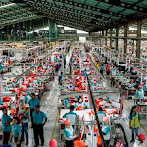In its most common use, the term fashion refers to the current expressions on sale through the fashion industry. The global fashion industry is a product of the modern age.In the Western world, tailoring has since medieval times been controlled by guilds, but with the emergence of industrialism, the power of the guilds was undermined. Before the mid-19th century, most clothing was custom-made. It was handmade for individuals, either as home production or on order from dressmakers and tailors. By the beginning of the 20th century, with the rise of new technologies such as the sewing machine, the rise of global trade, the development of the factory system of production, and the proliferation of retail outlets such as department stores, clothing became increasingly mass-produced in standard sizes and sold at fixed prices.
Although the fashion industry developed first in Europe and America, as of 2017, it is an international and highly globalized industry, with clothing often designed in one country, manufactured in another, and sold worldwide. For example, an American fashion company might source fabric in China and have the clothes manufactured in Vietnam, finished in Italy, and shipped to a warehouse in the United States for distribution to retail outlets internationally.







